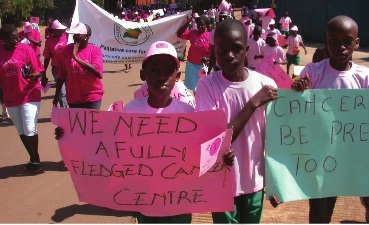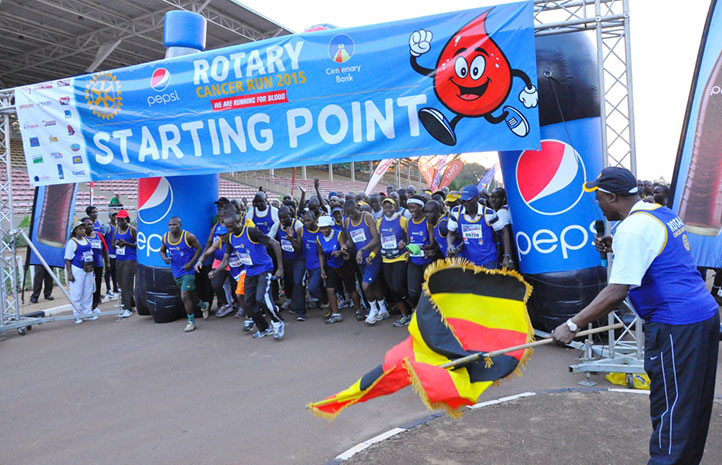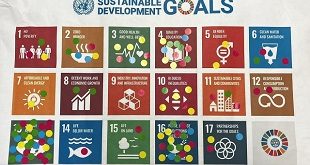Cancer prevalence in Uganda is growing rapidly. It currently stands at between 80,000 and 100,000 with cervical cancer, the commonest in addition to Kaposi’s sarcoma, breast and prostate cancers.
Outside of the scary statistics, there is a side of cancer that doctors in Uganda do not have tools to fix. For some patients and caregivers, it could be the most serious side effect and deciding how to handle it could make the difference between a cancer sufferer living or dying. We are talking about the financial cost of cancer care in Uganda.

Dr. GeraldMutungi, the Programme Manager for Non-Communicable Diseases Prevention at the Ministry of Health says currently the main challenge is that by the time a patient is finally diagnosed with cancer, they have first been treated for a host of other suspected diseases. He says this round-about approach is financially stressful, and results in late detection, which results in more intrusive and costly interventions.
Fausta Akech knows the pain of costly interventions. For her, it was her mother who was diagnosed with cervical cancer in September 2013. She recalls that as soon as cancer was suspected, doctors started recommending test after test. Knowing that cancer can best be defeated if one acts fast, Akech and her family decided that they needed to get treatment from a private provider.
The first doctor they approached asked for Shs6 million for a surgery. Akech was, at the time, a secondary school teacher of Foods and Nutrition. Her sister who was sharing the bills was a lecturer at the Department of Pharmacology and Therapeutics at Makerere Medical School.
In normal times, they could have been considered financially well off. But faced with the huge bill from the private clinic, they suddenly realized they could not afford it. They soon decided to take the slower route of having the operation done at a government run hospital; the China Uganda Friendship Hospital in Kampala. Here they were placed on a long waiting list of patients and had to compete for the doctor’s attention.

Treatment was not completely free but Akech says they spent less than the Shs6 million demanded by the private clinic. Soon, however, Akech realized that the surgery was not the end. It was, in fact, the beginning of a long painful time in her life.
After the surgery, her mother who was 48 years old was started on chemo and radiotherapy. The doctors said it would kill off any cancerous cells that could have been left out during surgery.
“We got prepared for the worst considering that this is toughest part of treatment,” Akech says, “but what we didn’t anticipate were the killer costs.” Akech says every week the patient had to go for radiotherapy at the government owned Uganda Cancer Institute (UCI).
It was free and they did it 27 times and went beyond the normal 3 to 6 weeks. She says the most challenging aspect was that they always had to leave their home in Namugongo, a Kampala city suburb at 11pm in order not to be late for their midnight appointment.
“There was one machine for all the patients who needed radiation. We were scheduled for midnight. My mother would be in there until 4am in the morning,” Akech says. Although the radiotherapy was free, there are times when they had to part with Shs1.8 million for a certain cancer drug which they used in combination with the others.
Patients and caregivers should not be forced to choose between enrolling for costly treatment that could bankrupt them or lying back and waiting for death
In addition to this, they had to religiously follow a specific nutrition plan of fruits and vegetables that would help the patient flush out the poisonous substances. As the financial costs rose, the sisters decided to take a bank loan.
Even then, the patient still missed more than three doses of chemotherapy because they had no money. “Time was running out. We had no more money left from the bank loan we had secured,”Akech recalls, “Fortunately mother was declared free from cancer. She regained weight, got her hair back and went back to her home.”
But she soon fell ill again in April 2015. This time, it was intestinal obstructions that caused her stomach to swell. Later it was confirmed that it was a side-effect of the cancer chemotherapy. It had caused part of her intestines to rot.
Three more surgeries followed; each costing the girls more money. Then the cancer shifted to the bladder and the doctors warned the sisters that it was the `aggressive’ type and they needed to ‘act fast’ to save their mother or else “lose the battle”.
This time, public hospital and attendant delays was not an option. The sisters bit the bullet and took a Shs20 million bank loan, sold five cows, and raised funds from friends and family. In spite of all that, their mother died. And the sisters are to date, still paying back money they borrowed in the futile fight to save her life.
 The Independent Uganda: You get the Truth we Pay the Price
The Independent Uganda: You get the Truth we Pay the Price




Africa is still in trouble. A surgery to a critical patient costing UGx 6 million?
The world Health organisation has to step in and provide funding but most importantly the doctors raises have to be increased and the officials monitoring the funds that might be provided so that they don’t end up in the pockets of corrupt officials.